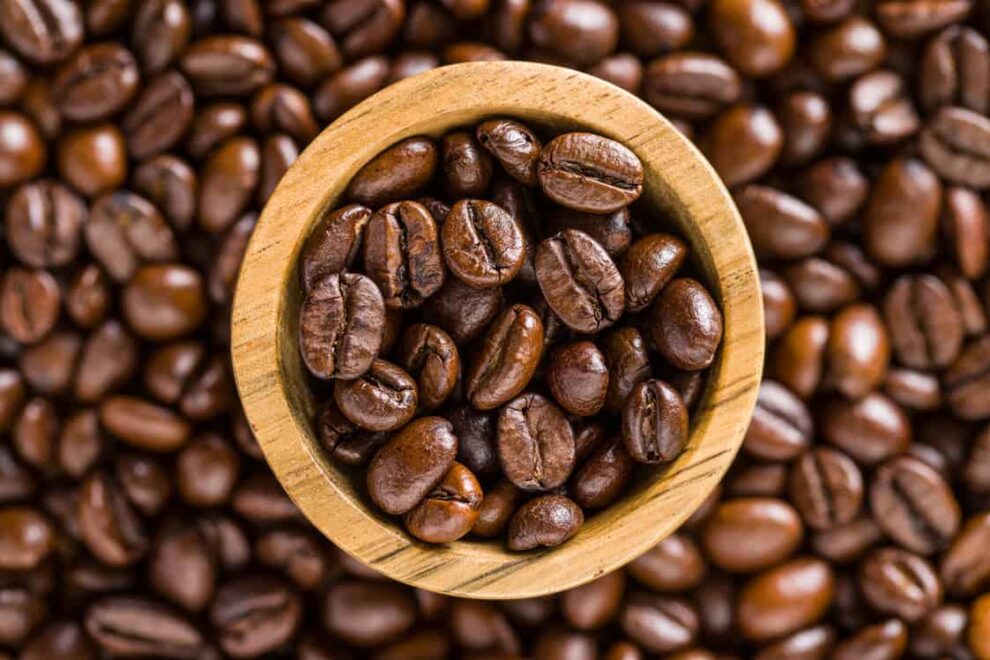If you live in Japan and have noticed that your morning caffeine fix doesn’t quite pack the kick you were expecting, blame it on the war in Ukraine.
It turns out that the quality of coffee beans exported to Japan has dropped slightly. This, say experts, is largely due to the soaring price that farmers in Colombia are having to pay for fertilizer imported from Russia.
Yu Shimada, a coffee appraiser who works for Nagoya-based Manrakuan, is responsible for the quality of coffee beans grown in Colombia and imported by his company to Japan.
Shimada, 40, said he noticed that the beans were “less aromatic than before” when he visited a farm there last autumn.
While they looked the same, the brew extracted from the beans tasted flatter, he said.
Shimada is a licensed Q Grader, a quality appraiser authorized by the Specialty Coffee Association of America. It means he has an exacting sense for the taste and flavor of coffee.
When he asked farmers of various areas if they had changed the way they were going about things, many of them said they were using less fertilizer.
Colombia is a major importer of fertilizer from Russia, the world’s top exporter of the product.
Prices of fertilizer surged after Russia went to war against Ukraine in February 2022, resulting in a sharp drop in imports by Colombia.
Nitrogen fertilizer encourages the growth of coffee leaves. Lower yields and reduced bean quality result when less fertilizer is used.
Farmers complained they could no longer afford to buy fertilizer because prices had tripled, Shimada said.
Coffee bean prices have been steadily rising in recent years.
For example, prices on the New York futures market remained extremely high for 10 months from November 2021, reaching levels of around 2.5-fold from pre-pandemic levels due to skyrocketing transportation costs and fluctuations in foreign exchange rates.
Coffee beans still cost more than 1.5 times what they did before the novel coronavirus pandemic, Shimada added.
PRICE HIKES IN JAPAN
In the summer of last year, convenience store chains in Japan had no choice but to raise the prices of the coffee they serve in cups. Prices of canned coffee products were also raised in May this year for the first time in 25 years.
Turret Coffee, a cafe in Tokyo’s Chuo Ward, raised the prices of drinks on its menu by a uniform 20 yen (14 cents) or so around spring last year.
“That was a tough decision,” said Kiyoshi Kawasaki, the 43-year-old owner. “But I didn’t want to compromise the quality despite the rising cost of beans.”
Kawasaki said he has yet to feel the impact of surging fertilizer prices but has begun looking for new suppliers to maintain product quality.
BUT STILL TASTY
Shimada, of Manrakuan, said coffee consumed in Japan continues to taste almost the same as before.
“There has been a slight, overall drop in bean quality, but I think the taste remains as good as it used to be, thanks to changes in mixture ratios and tricks being used in roasting methods,” he said. “The credit should go to the trial-and-error efforts of Japan’s coffee industry people, such as importers and processors.”
Farmers have also been trying to cope by trying different methods.
“Some farmers are adding orange peel or yeast to coffee beans to bring out flavors when they ferment the beans in the stage of post-harvest processing,” Shimada said. “Those methods, which drew attention even before the war began, are attracting the attention of more farmers because of the fertilizer shortage.”
PRODUCTION AREAS COULD SHRINK
The skyrocketing fertilizer prices are not the only source of concern. Also looming is the so-called 2050 problem, which hypothesizes that fewer parts of the world will remain suitable for growing coffee due to global warming.
World Coffee Research, an international nonprofit research body, asserts that climate change will mostly affect hot and dry regions of the world, such as Brazil and Nicaragua, rather than areas around the equator, and that half of the land currently suitable for Arabica coffee production will no longer be suitable by 2050.
Turret Coffee is doing its bit in the hope it is helping to curb global warming. It now offers takeout coffee in containers made of bagasse, or sugar cane pulp, and sells plastic-free tumblers.
“The future remains uncertain. I just hope that coffee will remain a reasonably priced drink that people can continue to afford to consume every day,” said Kawasaki, the cafe owner.
Source : Asahi.com










